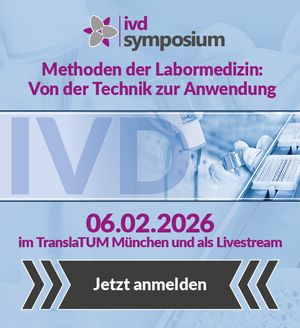Literatur
[1] Singer M et al. The third international consensus definitions for sepsis and septic shock (Sepsis-3). JAMA 2016; 315:801–10
[2] Stehr S et al. Sepsis: putting knowledge into practice. Internist (Berl) 2013; 54(1):63–72.
[3] Brett U. Sepsis zu spät behandelt, kann das Labor helfen? MTA-Dialog 2009; 8:622–5
[4] Pierrakos C, Vincent J-L. Sepsis biomarkers: a review. Crit Care 2010; 14: R15
[5] Erenler K, Yardan T. Presepsin (sCD14-ST) as a biomarker of sepsis in clinical practice and in emergency departments. J Lab Med 2015; 39: 367-72
[6] Meisner M. Procalcitonin: Erfahrungen mit einer neuen Messgröße für bakterielle Infek- tionen und systemische Inflammation. J Lab Med 1999; 23:263–72
[7] Enguix-Armada A et al. Usefulness of several biomarkers in the management of septic patients: C-reactive protein, procalcitonin, presepsin and mid-regional pro-adrenomedullin. Clin Chem Lab Med 2016; 54(1):163–8
[8] Lvovschi V, Arnaud L, Parizot C, et al. Cytokine profiles in sepsis have limited relevance for stratifying patients in the emergency department: a prospective observational study. PLoS One 2011; 6(12):e28870
[9] Dreger N et al. Urosepsis – Ursache, Diagnose und Therapie. DÄB 2016; 113: 39-49
[10] Simon Let al. Serum procalcitonin and C-reactive protein levels as markers of bacterial infection: a systematic review and meta-analysis. Clin Infect Dis 2004; 39: 206–17
[11] Brunkhorst F et al. Direct costs related to severe sepsis in Germany: an update. Infection 2011; 39 (suppl. 2): 143–4
[12] AWMF-Leitlinie Nr. 079/001. Prävention, Diagnose, Therapie und Nachsorge der Sepsis. 2010: www.awmf.org/uploads/tx_szleitlinien/079-001l_S2k_Sepsis_2010-abgelaufen.pdf
[13] www.br.de/themen/ratgeber/inhalt/gesundheit/bluttest-spart-antibiotika-100.html


